6 Common Leafy Greens For Bearded Dragons To Eat Regularly
In this post we provide a list of the 6 most common leafy greens for bearded dragons to eat every day and break down the nutritional content of each into an easy to digest table for comparison
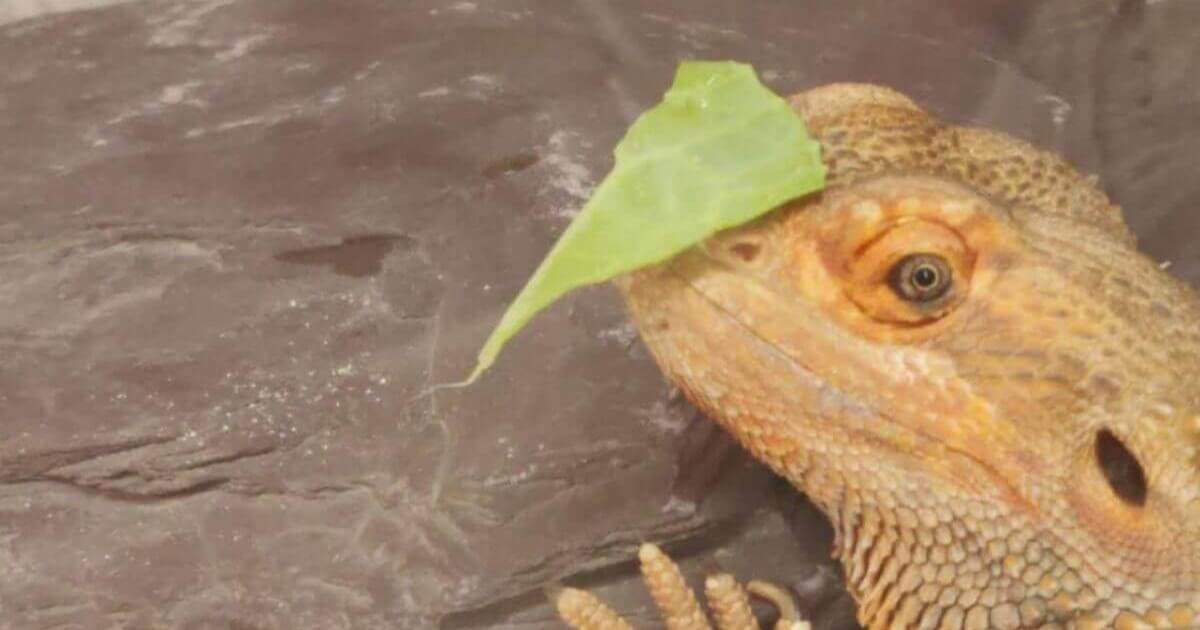
Last Updated: July 11th, 2023
By: Steve
In this post we look at the leafy greens for bearded dragons to eat on a regular basis. Not all leafy greens or vegetables should be given every day, since some of them contain a poor calcium:phosphorous ratio, high oxalate content or have high goitrogen content. A poor calcium:phosphorous ratio can hurt your bearded dragon because phosphorous actually inhibits the uptake of calcium and bearded dragons require a lot of calcium. Goitrogens can cause other issues with your bearded dragon’s iodine uptake and cause hormonal issues, whilst, finally, Oxalates can cause a reduction in calcium uptake as well as potential kidney issues such as stones.
With that in mind, these vegetables and leafy greens are those which we believe are safe to give to your bearded dragon on a daily, or once every second day basis. Bear in mind though that it’s worth mixing up the diet a little bit, even with these staple foods for bearded dragons.
Table of Contents
Greens for Bearded Dragons Nutritional Quick Reference
The table below shows a quick comparison of the leafy greens that bearded dragons can eat on a daily basis. There are of course more leafy greens and vegetables that bearded dragons can eat occasionally, which is dealt with in a separate post. These are our recommendations for daily feeding. You’ll see that they’re all quite similar, with perhaps the exception of Collards/Spring Greens which are in a league of their own with regard to the Ca:P ratio – making them an excellent staple leafy green for bearded dragons.
| Item | Collards | Dandelion | Turnip Green | Endive (etc.) | Watercress | Mustard Greens |
|---|---|---|---|---|---|---|
| Water (%) | 90 | 86 | X | X | 95 | 91 |
| Protein (%) | 3.0 | 2.7 | 1.2 | 1.3 | 2.3 | 2.9 |
| Fibre (%) | 4.0 | 3.5 | 3.5 | 3.1 | 0.5 | 3.2 |
| Calcium (%) | 0.23 | 0.20 | 0.19 | 0.05 | 0.12 | 0.12 |
| Phosphorus (%) | 0.03 | 0.07 | X | 0.03 | 0.06 | 0.06 |
| Ca:P Ratio | 8:1 | 3:1 | X | 1.6:1 | 2:1 | 2:1 |
| Potassium (%) | 0.21 | 0.40 | 0.29 | 0.31 | 0.33 | 0.38 |
| Vit. A (ug/100g) | 251 | 508 | 381 | 108 | 160 | 151 |
| Vit. C (ug/100g) | 35 | 35 | 59 | 6.5 | 43 | 80 |
| Oxalate (mg/100g) | 4.25 | X | 12.45 | X | X | X |
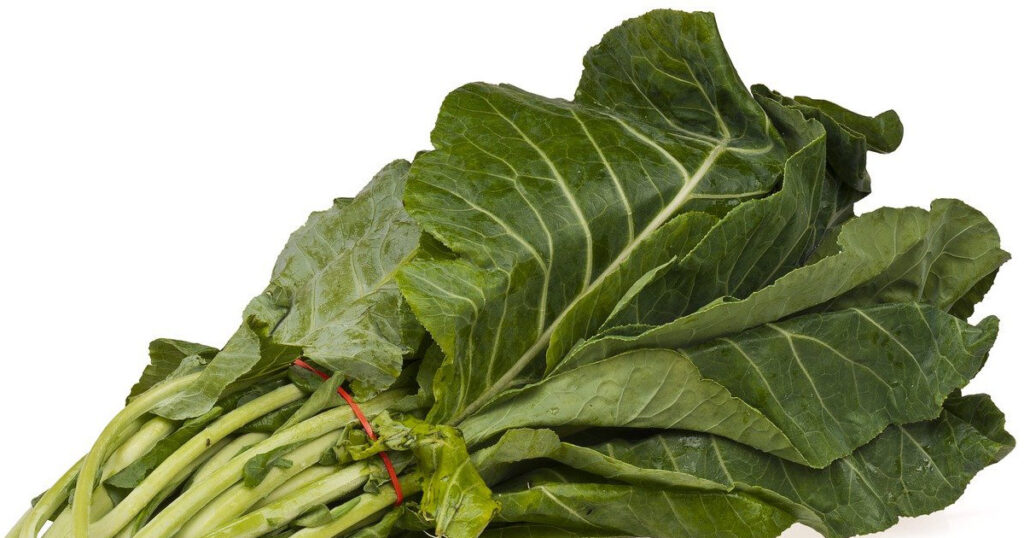
Collard Greens / Spring Greens for Bearded Dragons
Bearded dragons can eat collard greens (or Spring Greens as they’re known in the UK) and they should do so regularly. It’s always good to mix up the vegetable diet of bearded dragons to provide variety in nutrients and colour and to help keep your bearded dragon interested. But collard greens are one of the best leafy greens for bearded dragons to eat on a regular basis.
Collard/Spring greens are members of the Cruciferous family. The cruciferous family also contains Bok Choy, Broccoli, Brussels Sprouts, Cabbage and perhaps somewhat surprisingly, turnips. They contain lots of different nutrients and are low in fat.
They’re high in both fibre and water content and make an excellent leafy green vegetable to feed locusts on. They’re also high in Vitamin A, Vitamin C and iron.
Advantages of Collard Greens for Bearded Dragons
Disadvantages of Collard Greens for Bearded Dragons
How To Feed Collard Greens / Spring Greens To A Bearded Dragon
Collard greens should be fed daily to bearded dragons as part of a balanced vegetable diet.
Many bearded dragons are quite happy to have fairly large leaves of collard green in a bowl (along with other vegetables) and they often like to rip them up and parade around the vivarium looking very proud of themselves.
Other bearded dragons of course won’t go near collard greens – or any green vegetables. You may find that a little dash of bee pollen might help entice them to take on some vegetable matter for dinner.
Collard greens should be fed to your bearded dragon as raw, and fresh. You can decide whether your bearded dragon prefers larger leaves or smaller chopped or shredded leaves. Either way, it’s the green, more succulent portion of the leaf that they’ll want to eat rather than the whiter veiny looking parts. The veins are quite tough anyway and even the locusts or crickets will avoid eating those parts.
If your bearded dragon has a thyroid problem you could try steaming the collard greens first to break down the goitrogens and reduce the thyroid issues associated with them. To be fair though, we’ve never tried to feed a bearded dragon on steamed or otherwise cooked collards, so we’re not sure if they’d even try it.
Nutritional Data For Collard Greens For Bearded Dragons
| Nutritional Item | Content |
|---|---|
| Water Content (%) | 89.62 |
| Fat (%) | 0 |
| Protein (%) | 3.02% |
| Dietary Fibre (%) | 4.0% |
| Calcium (mg/100g) | 232 (0.232%) |
| Potassium (mg/100g) | 213 (0.213%) |
| Phosphorous (mg/100g) | 25 (0.025%) |
| Vitamin A (ug/100g) | 251 |
| Vitamin C (ug/100g) | 35 |
| Oxalates (mg/100g) | 4.25 |
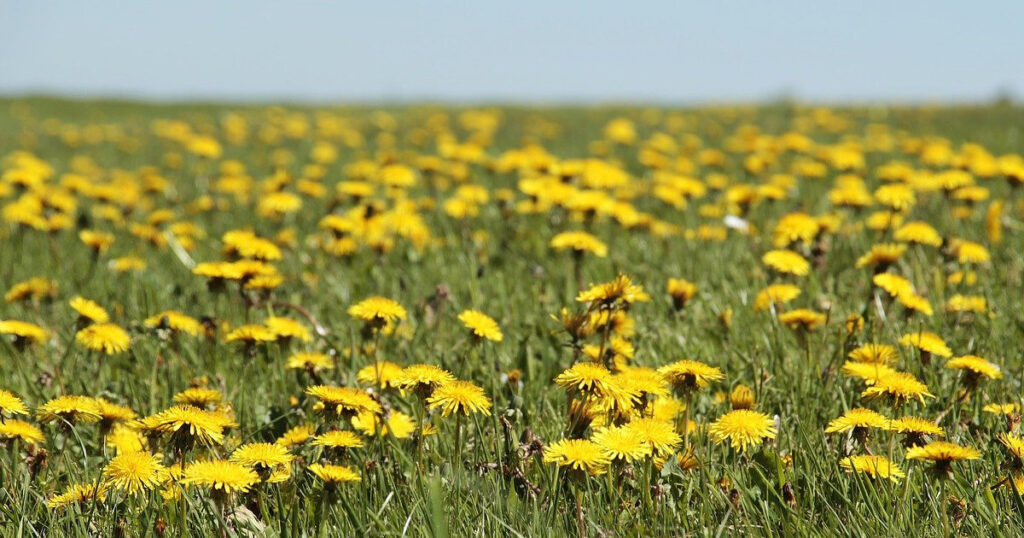
Dandelions for Bearded Dragons
Bearded dragons can eat dandelion on a regular basis and this applies to both the leaves and the flowers.
Dandelions (Taraxacum officinalis) are generally considered a weed in most of the world. They’re a nuisance in a lawn, but they do contain a good nutrient content for some animals when eaten and they’re a good source of nectar for insects.
Bearded dragons can eat dandelion greens as part of a staple, balanced diet. That is to say that dandelion leaves can be eaten by bearded dragons every day, but should be mixed with other vegetables to provide a good balance and plenty of variety.
Bearded dragons can also eat the flowers of dandelions. Indeed, ours love them. Our old girl loves dandelion greens too – in fact it’s pretty much the only green leafy vegetable she’ll eat.
Dandelion greens are a good source of calcium, with 9.2% carbohydrate and almost no fat. They do contain less water content than things like collard greens or spring greens.
Advantages Of Dandelion Greens For Bearded Dragons
Disadvantages Of Dandelion Greens For Bearded Dragons
How To Feed Dandelion Greens To Bearded Dragons
Dandelion greens can be picked from your own garden if you haven’t used any pesticides or herbicides. We’d caution against wild picked leaves unless you know for certain they haven’t been sprayed with something untoward – but if you are sure then wild grown dandelion leaves can be picked and used for your bearded dragon. Avoid roadside dandelion leaves as the chemicals from car engines, rubber and brake dust is not a good idea for your little buddy.
The dandelion leaves themselves can be placed whole, in a dish along with other vegetables to produce a nice tasty salad. Our bearded dragon prefer whole leaves instead of having them shredded. She also prefers them to be sticking up and natural looking. But she is fussy…
If you struggle to get your bearded dragon to eat any greens you can sprinkle some bee pollen over the leaves to make them more attractive.
The dish can be left in the vivarium until the contents are either eaten or become too dry or limp. At which point they should be replaced. You’ll most likely find that you need to replace them at least once throughout the day.
Place the dish with the salad at the cool end of the vivarium, and sprinkle with some water droplets to help maintain the freshness. You should also sprinkle some calcium supplement on them twice a week.
Dandelion leaves can be given every day as part of a mixed salad.
How Much Dandelion Green To Feed A Bearded Dragon
You can feed as much dandelion green leaves as your bearded dragon will eat. They’ll not over indulge on vegetables or leafy greens. Indeed, you’ll likely have the opposite problem whereby you can’t get them to eat enough.
You can feed dandelion leafy greens every day as part of a mixed salad balanced diet.
Nutritional Data For Dandelion Greens For Bearded Dragons
| Nutritional Item | Content |
|---|---|
| Water Content (%) | 85.6 |
| Fat (%) | 0.7 |
| Protein (%) | 2.7% |
| Dietary Fibre (%) | 3.5% |
| Calcium (mg/100g) | 187 (0.201%) |
| Potassium (mg/100g) | 397 (0.397%) |
| Phosphorous (mg/100g) | 66 (0.066%) |
| Vitamin A (ug/100g) | 508 |
| Vitamin C (ug/100g) | 35 |
| Oxalates (mg/100g) | Unknown |
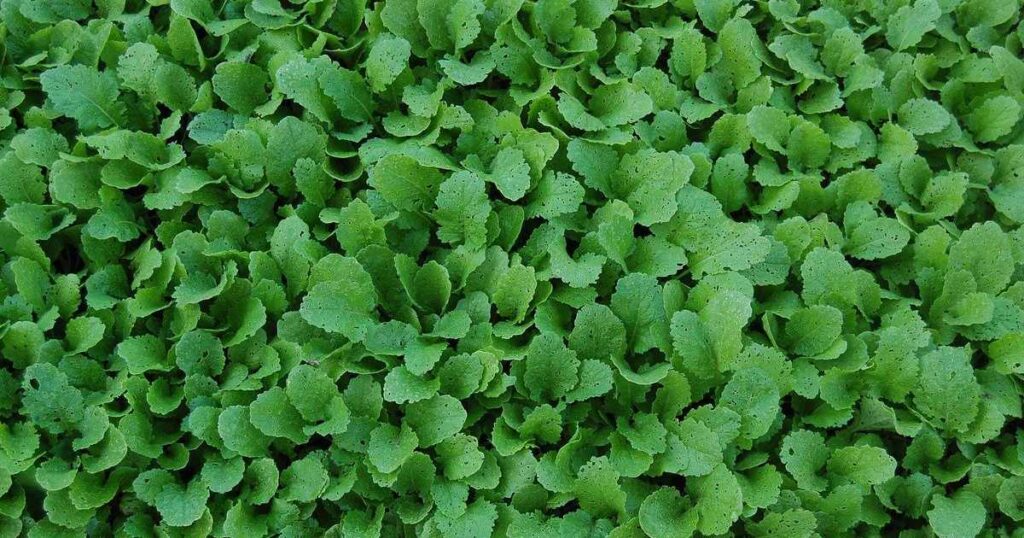
Turnip Greens for Bearded Dragons
As with all the other leafy greens on this post, bearded dragons can eat turnip greens regularly. The turnip root can also be given occasionally, but not as often as the leaves because the root is much higher in sugar and water content.
Bearded dragons can eat turnip greens as part of a staple, balanced diet. That is to say that turnip leaves can be eaten by bearded dragons every day, but should be mixed with other vegetables to provide a good balance and plenty of variety.
Turnip greens are the dark leafy greens that grow atop turnips. They’re often discarded but they are edible and bearded dragons often love them. For humans they can often be used anywhere that you might use any other leafy green vegetable.
Turnip greens have a peppery punch to them and can be quite an acquired taste, but many bearded dragons like this peppery taste and often go for the more bitter tasting greens which might be rejected by humans.
They can be quite tough and stringy and humans would generally not eat them raw. Most bearded dragons of course wouldn’t have them cooked for them.
In the UK they may be called Turnip Tops. They do have a good Vitamin A content, a reasonable Calcium content but not a great Vitamin C content. The data we could find suggests they have a fairly low Oxalate content compared to Collard Greens. This puts the calcium to oxalate ratio to be better than that of Collards.
Advantages Of Turnip Greens For Bearded Dragons
Disadvantages Of Turnip Greens For Bearded Dragons
How To Feed Turnip Greens To A Bearded Dragon
Turnip greens should be cut away from the fibrous stem and can be chopped and added to a mixed salad bowl. The fibrous stems should be discarded.
The turnip tops should be placed in a dish with a variety of other salad items to provide a balanced diet. The greens should be chopped up as mentioned above and should be sprinkled with calcium supplement twice a week. You can also sprinkle some drops of water on the salad mix to help keep it fresh.
It should be placed in the cool end to help keep it fresh longer.
How Much Turnip Green To Feed A Bearded Dragon
You can feed as much turnip green leaves as your bearded dragon will eat. They’ll not over indulge on vegetables or leafy greens. Indeed, you’ll likely have the opposite problem whereby you can’t get them to eat enough.
You can feed turnip leafy greens every day as part of a mixed salad balanced diet.
If you can’t get your bearded dragon to eat turnip greens, or indeed any greens, then you can try sprinkling with a little bee pollen which seems to improve their appetite for greens.
Nutritional Data For Turnip Greens For Bearded Dragons
| Nutritional Item | Content |
|---|---|
| Water Content (%) | Not Listed |
| Fat (%) | 0 |
| Protein (%) | 1.18% |
| Dietary Fibre (%) | 3.5% |
| Calcium (mg/100g) | 188 (0.188%) |
| Potassium (mg/100g) | 294 (0.294%) |
| Phosphorous (mg/100g) | Not Listed |
| Vitamin A (ug/100g) | 381 |
| Vitamin C (ug/100g) | 58.8 |
| Oxalates (mg/100g) | 12.45 |
Oxalate data is approximated based on data for overall turnip content
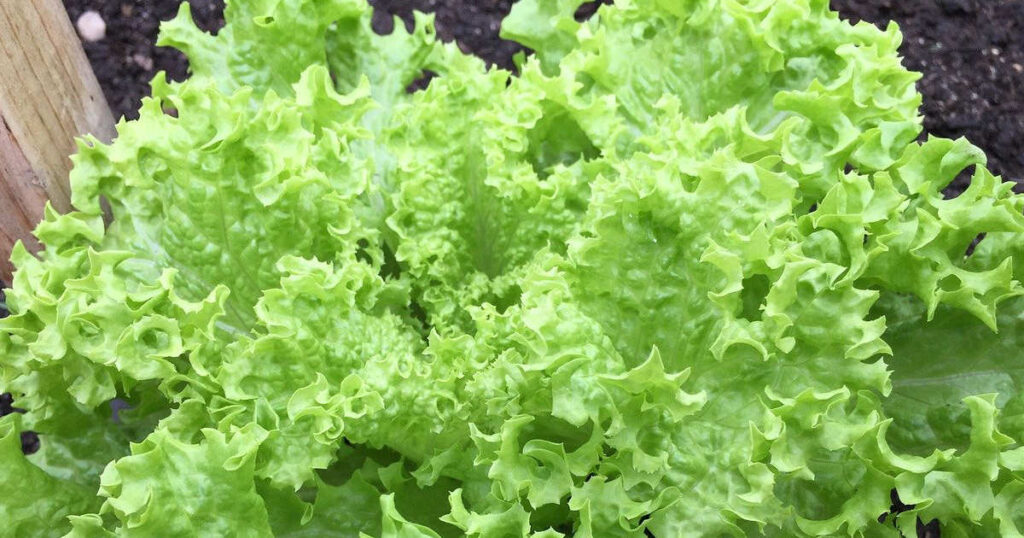
Endive / Chicory / Escarole for Bearded Dragons
Chicory, Endive and Escarole are all from the same family of leafy green vegetables and are of very similar nutrient quality, so we’ve combined them into this one section. Bearded dragons can eat Endive, Chicory or Escarole regularly.
Endive is a leafy green vegetable belonging to the Cichorium family. The Cichorium family includes a number of other bitter-leafy vegetables such as Chicory and Escarole. The various members of the family share very similar nutritional qualities but can look quite different.
For example, Curly Endive (Chicorium endiva) has narrow green outer leaves and is often called Chicory in the USA. However, to confuse everyone, what is known as Chicory in Europe is a different member of the Cichorium family – which is Chicorium intybus.
Escarole is a broad leafed Endive which has pale green leaves and is less bitter than the other varieties of Endive.
Endive, chicory and Escarole are all perfectly fine for bearded dragons as part of a mixed vegetable diet. They contain minimal Phosphorous, manageable potassium and some calcium though their calcium levels are not huge. Importantly though, according to St Joseph’s Healthcare of Hamilton, Canada data, there’s very minimal oxalate content in Endive as you can see from the table at the end.
There’s minimal Vitamin A or C in Endive either, which perhaps sounds like Endive shouldn’t be recommended for bearded dragons. However, it’s worth remembering that excess Vitamin C can be broken down to form Oxalates which will reduce the absorption of calcium.
It’s fair to say from the nutritional information of Endive that there’s not much in it for bearded dragons. But there’s nothing harmful in it either. So it’s not going to be something that you would want to feed on its own – but as part of a mixed vegetable diet that can have it whenever they, or you, want.
Advantages Of Endive For Bearded Dragons
Disadvantages Of Endive For Bearded Dragons
How To Feed Endive To A Bearded Dragon
Chicory or Escarole or Endive can be fed to bearded dragons regularly. They should be washed and placed in a dish which is then dusted with calcium to improve the calcium intake for your bearded dragon.
These leafy green vegetables aren’t really useful on their own, but to bulk out a salad dish and provide some additional tangy flavour they work well. Depending on the type of Endive you may need to cut/shred the foliage a little to make it easier to eat. The fine leaf Endive however is almost herb like in appearance so you won’t need to do much with it.
How Much Endive To Feed A Bearded Dragon
You can feed as much Endive / Chicory / Escarole as your bearded dragon will eat. They’ll not over indulge on vegetables or leafy greens. Indeed, you’ll likely have the opposite problem whereby you can’t get them to eat enough.
You can feed Endive every day as part of a mixed salad balanced diet.
Nutritional Data For Endive For Bearded Dragons
| Nutritional Item | Content |
|---|---|
| Water Content (%) | Not Listed at Source |
| Fat (%) | 0.2 |
| Protein (%) | 1.25 |
| Dietary Fibre (%) | 3.1 |
| Calcium (mg/100g) | 52 (0.052%) |
| Potassium (mg/100g) | 314 (0.314%) |
| Phosphorous (mg/100g) | 28(0.028%) |
| Vitamin A (ug/100g) | 108 |
| Vitamin C (ug/100g) | 6.5 |
| Oxalates (mg/100g) | 0 |
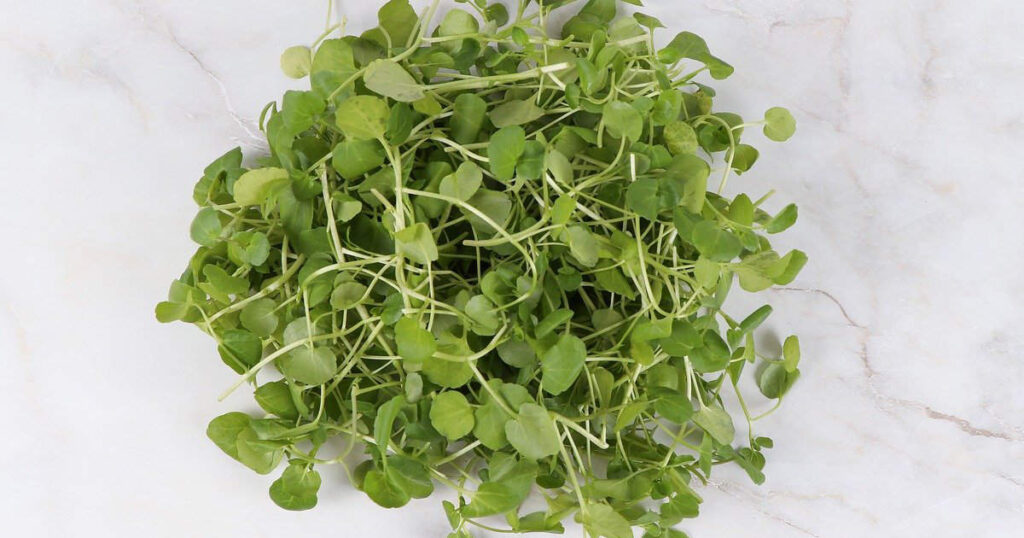
Watercress for Bearded Dragons
Like the other leafy greens on this page, Watercress can be fed regularly (i.e. every day) to bearded dragons and most of them will love it. Well, if they eat any vegetables willingly that is. It has a great calcium content and a tangy taste that bearded dragons enjoy. In fact one of our bearded dragons would pretty much only eat watercress by choice. We convinced her otherwise but it was definitely her favourite.
Watercress is an aquatic plant which is in the cabbage family – similar to collard greens and spring greens – but with quite different looking leaves! Watercress is one of the oldest known leafy greens that is eaten by humans. There are many other members of the same family, such as garden cress, mustard and radish all of which have a tangy, almost peppery taste.
Watercress will produce small green and white flowers, although generally it’s only the leaves that are eaten.
It survives relatively well for a few days in the cool environment of the fridge but it won’t last long in the bearded dragon tank. Generally we’ve found it starts to look dry and quite unappetising after a couple of hours in the bearded dragon tank, so you may need to have a couple of servings per day.
Advantages Of Watercress For Bearded Dragons
Disadvantages Of Watercress For Bearded Dragons
How To Feed Watercress To A Bearded Dragon
Watercress will need to be kept in the fridge until they’re ready to be fed. Even then they really only last two to three days (at a push) before they become either dried out or, if kept in a plastic bag, mushy and nasty.
When we’ve fed watercress to our bearded dragons we’ve cut the larger white, hollow and fibrous stems off the bottom but kept the leaves attached to the smaller stems so that they appear in bunches. In this way there’s just enough substance for our beardies to enjoy them, without them being too big and fibrous.
Watercress can be given daily as part of a mixed vegetable diet. It can be placed in a dish with the other vegetables you’re feeding and can be left in the vivarium throughout the day. Do bear in mind though that watercress will dry out and become very unappetizing within perhaps a couple of hours if not eaten fairly quickly.
You can dust the watercress or other vegetables with a good quality calcium supplement to help ensure your bearded dragon gets enough calcium throughout the week. Don’t overdust though as this will just make the vegetables unappetizing and you’ll struggle to get your dragon to eat them if they taste too chalky. You can also sprinkle some drops of water over the watercress to help lengthen the time before they become dry and inedible.
How Much Watercress To Feed A Bearded Dragon
Watercress can be fed every day. It should be placed in a suitable dish in the morning and can be left in the vivarium all day – replacing when it gets too dry or has been mostly eaten. You’ll not overfeed watercress to your bearded dragon so don’t worry if they eat loads. Do be aware though that it dries out quite quickly in a vivarium so you’ll probably need to change it at least once during the day if you put it in the morning.
Fresh watercress has, unsurprisingly, a huge water content, around 95% in fact. But that includes the stalks and since many people will cut off a lot of the stalk the figure can be a bit misleading. Nevertheless, watercress can be good rehydrating a dragon. Normally 95% water would be too much, but given how quickly it dries and the missing stalks – we’re happy that watercress can be fed daily.
You should mix in other vegetables to give your dragon some variety, but there’s no upper limit on how much they can have.
Nutritional Data For Watercress For Bearded Dragons
| Nutritional Item | Content |
|---|---|
| Water Content (%) | 95 |
| Fat (%) | 0.1 |
| Protein (%) | 2.3% |
| Dietary Fibre (%) | 0.5% |
| Calcium (mg/100g) | 120 (0.120%) |
| Potassium (mg/100g) | 330 (0.330%) |
| Phosphorous (mg/100g) | 60 (0.06%) |
| Vitamin A (ug/100g) | 160 |
| Vitamin C (ug/100g) | 43 |
| Oxalates (mg/100g) | Not Available |
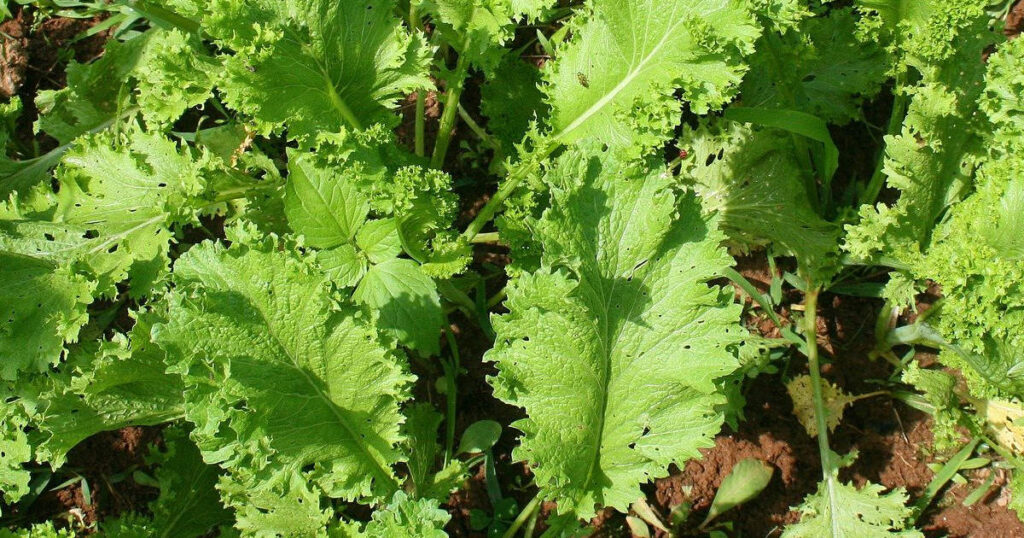
Mustard Greens For Bearded Dragons
Bearded dragons can eat mustard greens regularly.
Mustard greens are another leafy green vegetable family that encompasses various different plants. The term mustard greens, when referring to keeping of bearded dragons at least, is most commonly applied to curled-leaf mustard or American mustard. Other subspecies exist across the world however and all are related if they are members of the Brassica juncea family.
The mustard plant is cultivated and grown across the world and the Brassica juncea is grown in the US, Canada, UK, Denmark, Bangladesh and India. It’s often grown in these countries to produce the seeds which are then ground into a spice, known as the condiment, mustard. Which, if you like that sort of thing, is delicious (and I do).
In the case of mustard greens for bearded dragons though, it is the leaf of the plant that is the important part.
Mustard greens for bearded dragons are a reasonable source of calcium, vitamin C, folate and dietary fibre. They’re also quite high in water content, which helps to keep your bearded dragon hydrated. At this time we have been unable to find the oxalate content of mustard greens however.
Advantages Of Mustard Greens For Bearded Dragons
Disadvantages Of Mustard Greens For Bearded Dragons
How To Feed Mustard Greens To A Bearded Dragon
Mustard greens can be fed as part of a balanced staple green leafy vegetable diet. You can mix them up with other vegetables and place them in a dish. Cut away any fibrous stems as they’ll be too hard and unappetizing for your bearded dragon.
The greens can be placed in the vivarium in the morning once your bearded dragon has warmed up (it’s best to let them bask for a couple of hours before feeding if possible) and can be left in place throughout the day. If they become dried out or mostly eaten they’ll need to be replaced.
You can dust the leaves with a good quality calcium supplement every few days.
How Much Mustard Green To Feed A Bearded Dragon
Mustard greens can be fed every day. They should be placed in a suitable dish in the morning and can be left in the vivarium all day – replacing when they get too dry or have been mostly eaten. You’ll not overfeed mustard greens to your bearded dragon so don’t worry if they eat loads.
Mustard greens should be dusted lightly with a calcium supplement to increase the calcium content at least twice a week. They can also be lightly sprinkled with some water before being placed in the dish to help keep them a little bit more fresh throughout the day.
Place the mustard greens and salad mix at the cool end of the vivarium so that they last longer before drying out. Dried mustard greens aren’t going to be appetizing for your bearded dragon. You may find you need to replace them at least once throughout the day if your bearded dragon hasn’t eaten them before they go dry and wrinkly.
You should mix in other vegetables to give your dragon some variety, but there’s no upper limit on how much they can have.
Nutritional Data For Mustard Greens For Bearded Dragons
| Nutritional Item | Content |
|---|---|
| Water Content (%) | 90.7 |
| Fat (%) | 0.42 |
| Protein (%) | 2.86% |
| Dietary Fibre (%) | 3.2% |
| Calcium (mg/100g) | 115 (0.115%) |
| Potassium (mg/100g) | 384 (0.384%) |
| Phosphorous (mg/100g) | 58 (0.058%) |
| Vitamin A (ug/100g) | 151 |
| Vitamin C (ug/100g) | 70 |
| Oxalates (mg/100g) | Unknown |
Summary
In this post we’ve looked at the leafy green vegetables that bearded dragons can eat on a daily basis. If you look at the quick reference chart at the top of the post, you’ll see they’re all fairly similar with the exception of Collard / Spring greens. Collards, for almost all nutritional values, outperform the other leafy greens considerably and are definitely one of our favourites for giving to our girls.
You may be surprised to see Dandelions in the list – but as you can see again from the quick reference they’ve got a pretty decent Ca:P ratio and can be given to your bearded dragons as a nice additional salad offering. The others are probably all as good as each other and can be mixed up and around to give your bearded dragon some variation in their diet so they don’t get too bored.
Remember, for adult bearded dragons, their diet should be around 80% vegetables and leafy greens and only 20% insects. If you want to help your bearded dragons to eat salad whilst they’re eating insects, you can feed crickets or locusts on Collards / Spring Greens and get some into your beardie that way.
References
Nutritional data sourced from US Department of Agriculture Food Database – https://fdc.nal.usda.gov/
Oxalate data sourced, where available, from Oxalate.org – https://oxalate.org/
If you’ve enjoyed this post please feel free to share it with your friends using the buttons below. If you have any comments, questions or other feedback please let us know using the comment form below.
Thanks for reading!
